Physical Address
304 North Cardinal St.
Dorchester Center, MA 02124
These are usually secondary to damage from external neck trauma or from a cuffed endotracheal or tracheostomy tube
A focus of circumferential or eccentric tracheal narrowing associated with a segment of increased soft tissue
Postintubation stenosis: this extends for several cm ▸ it typically involves the trachea above the level of the thoracic inlet
Post-tracheostomy stenosis: this typically begins 1–1.5 cm distal to the inferior margin of the tracheostomy stoma ▸ it involves 1.5–2.5 cm of tracheal wall
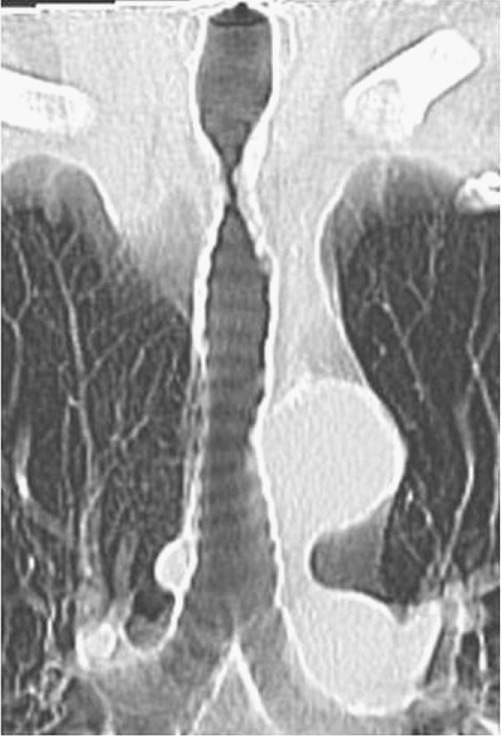
This is most commonly due to a bacterial tracheitis in immunocompromised patients ▸ it is also seen with TB, rhinoscleroma and necrotizing invasive aspergillosis
Irregular and circumferential tracheobronchial thickening ± mediastinitis
Active phase: a narrowed and irregularly thickened trachea ± the main bronchi
Fibrotic/healed phase: a narrowed trachea with a smooth wall of normal thickness
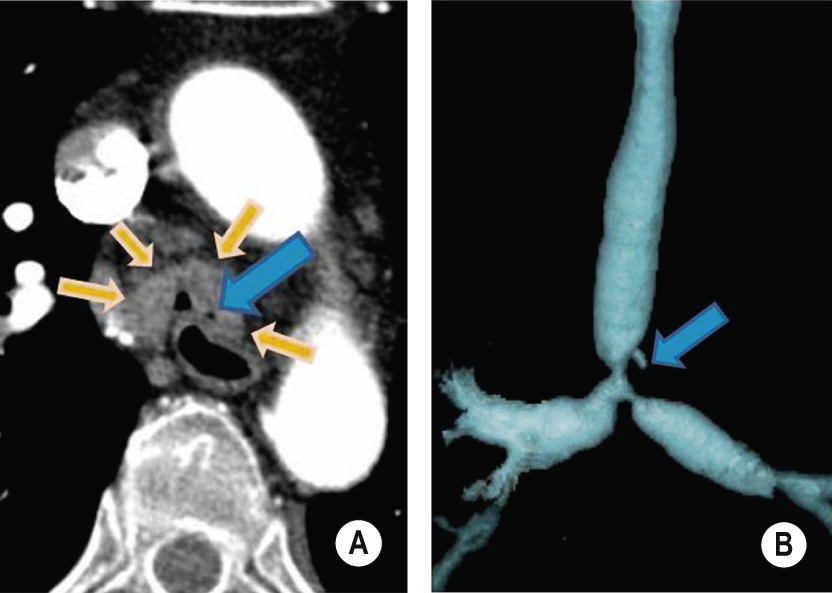
This is most commonly caused by a necrotizing pneumonia or secondary to trauma
This is commonly caused by Mycobacterium tuberculosis ▸ it is characterized by gas within a cavitated hilar or mediastinal lymphadenopathy
The most common cause is a malignant neoplasia (particularly oesophageal) ▸ infection and trauma are other causes
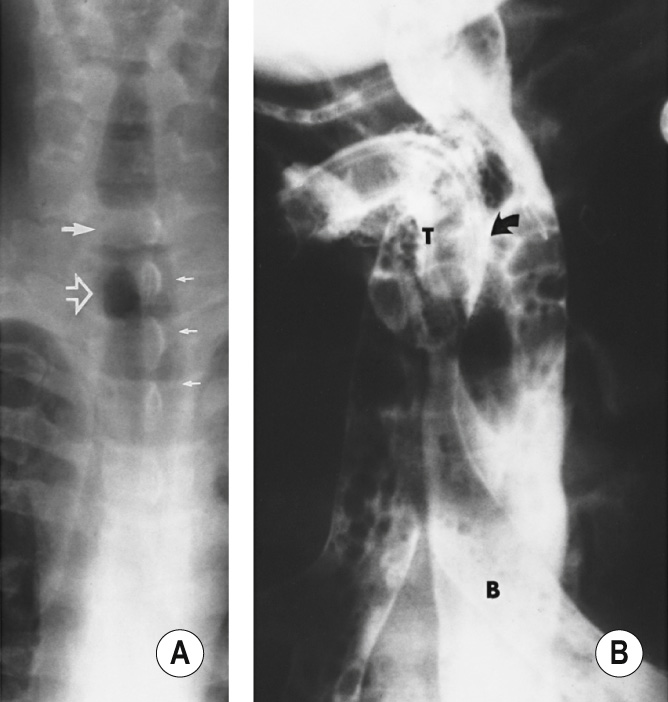
This is most commonly a hamartoma, leiomyoma, neurogenic tumour or lipoma
A well-demarcated and round lesion (< 2 cm) ▸ a smoothly marginated intraluminal polyp (hamartomas and lipomas may demonstrate fat attenuation)
These are uncommon – the vast majority are a squamous cell or adenoid cystic carcinoma
A soft tissue mass (usually involving the posterior and lateral walls) ▸ it is often sessile and eccentric resulting in asymmetrical luminal narrowing ▸ can be polypoid and mostly intraluminal (with mediastinal extension seen in 30–40%)
These can be due to a haematogenous metastasis (commonly renal cell carcinoma and melanoma) or following direct local invasion
Intraluminal soft tissue nodules and wall thickening
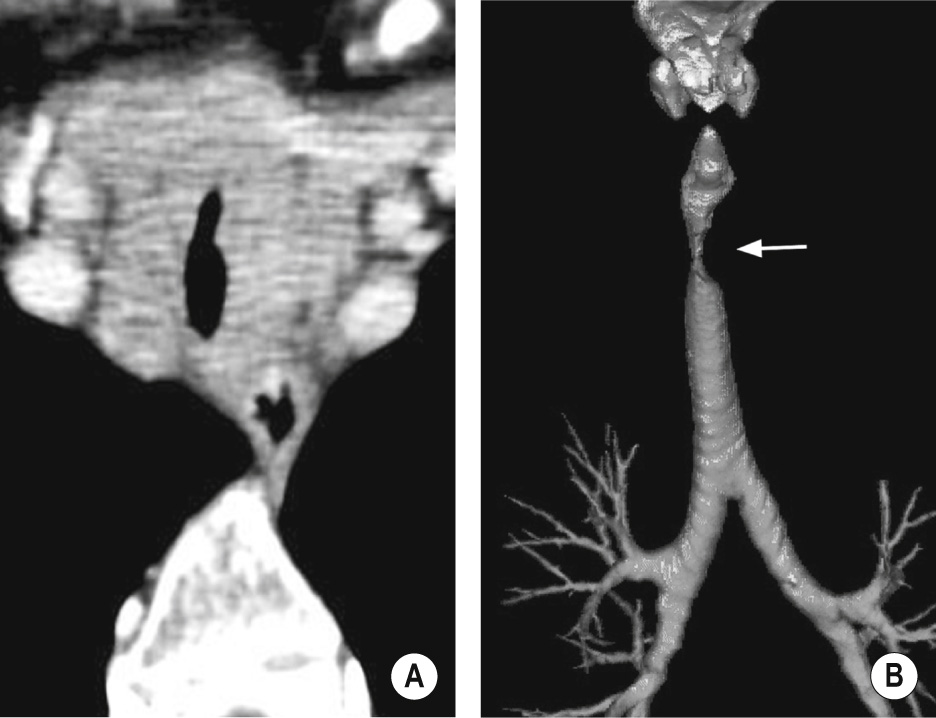
This is caused by human papillomavirus infection (and usually acquired at birth from an infected mother) ▸ it usually involves the larynx – occasionally extension into the trachea and proximal bronchi is seen
Typically multiple small nodules projecting into the airway lumen or diffuse nodular thickening of the airway wall ▸ although benign it may undergo transformation to a squamous cell carcinoma
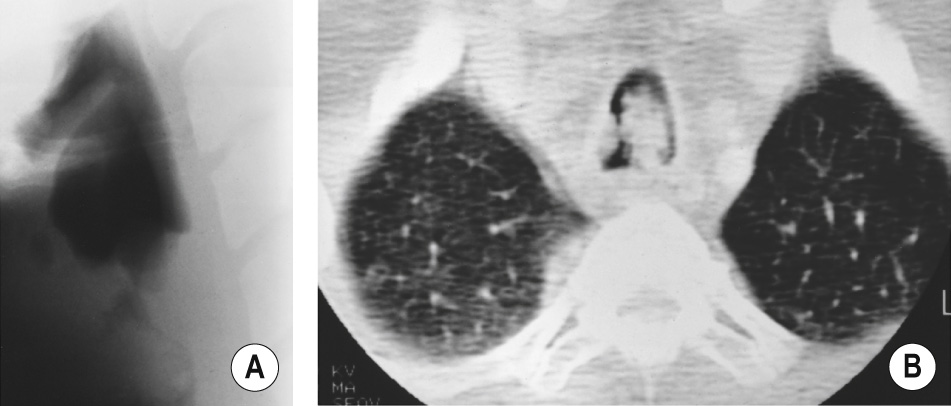
This results from weakened tracheal cartilage rings ▸ It is seen in association with tracheobronchomegaly, COPD, relapsing polychondritis and following trauma
Luminal diameter narrowing > 70% on expiration compared with inspiration ▸ calibre changes >50% can be seen at expiration with normal tracheal compliance with high dynamic pressure gradients (e.g. COPD) ▸ a coronal tracheal diameter significantly larger than the sagittal diameter (producing a lunate configuration)
Central tracheobronchial tree involvement may be either diffuse or focal
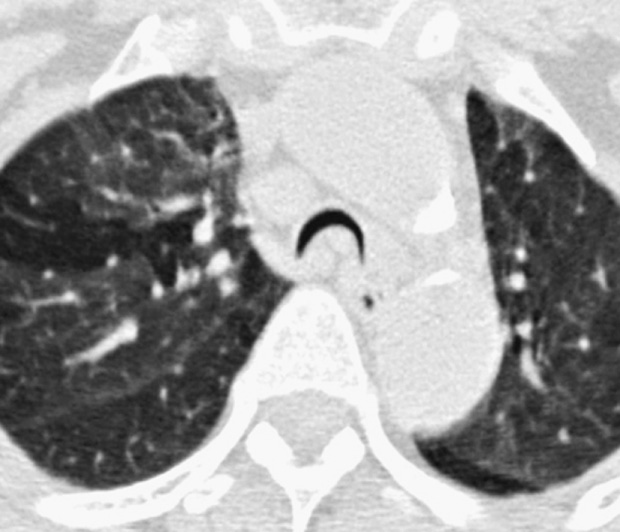
Large airway involvement is common (± subglottic or bronchial stenosis, ulceration and pseudotumour formation)
Thickening of the subglottic region and proximal trachea (smooth symmetrical or asymmetrical narrowing over a variable length) ▸ nodular or polypoid lesions may be seen on the inner airway contour ▸ luminal stenosis may affect any main, lobar or segmental bronchus
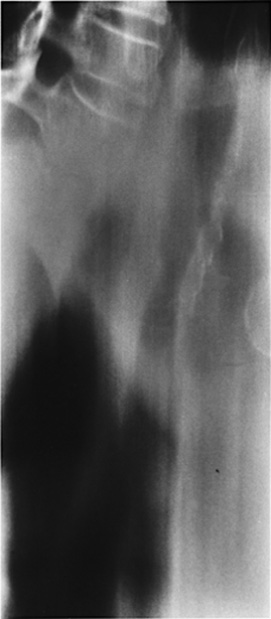
A rare systemic autoimmune disease affecting the cartilage of the ears, nose, joints and tracheobronchial tree (inflammation is followed by fibrosis) ▸ usually there is a symmetrical subglottic stenosis – with disease progression the distal trachea and bronchi may become involved
Smooth airway wall thickening associated with diffuse narrowing ▸ early sparing of the posterior tracheal wall (circumferential involvement with advanced disease) ▸ the trachea may become flaccid with considerable collapse at expiration ▸ fibrotic cartilaginous ring destruction may cause stenosis
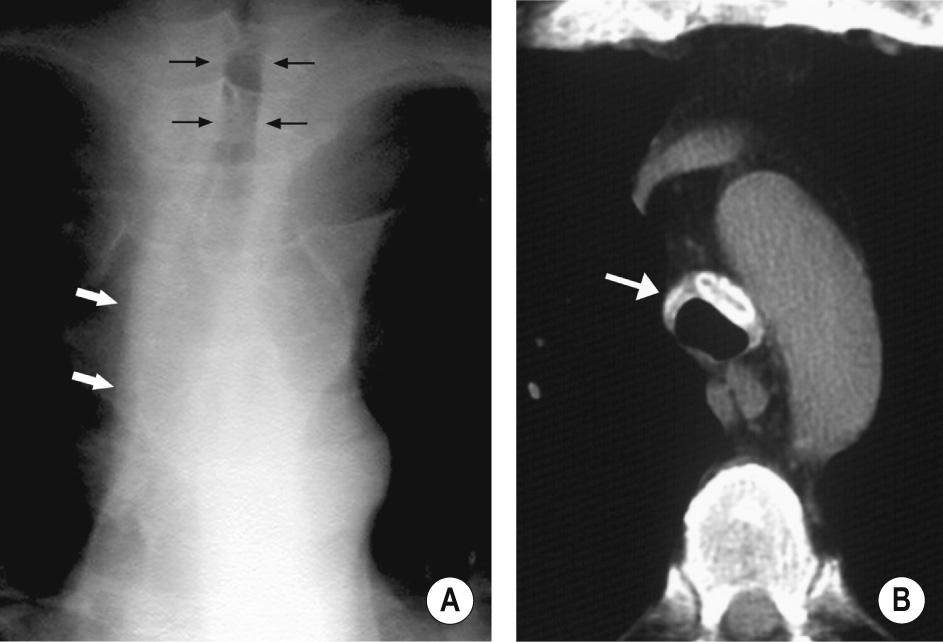
This is seen in association with systemic amyloidosis or as an isolated manifestation – therefore it can form either multifocal or diffuse submucosal plaques or masses (with an intact overlying mucosa) ▸ dystrophic calcification or ossification is frequently present
Become a Clinical Tree membership for Full access and enjoy Unlimited articles
If you are a member. Log in here